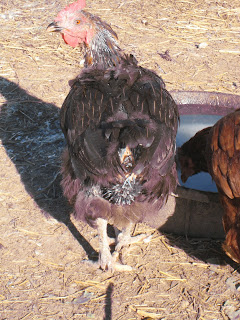We actually had so many carrots from the garden this year that we couldn't eat them all in just a few days. Amazing! So after a little online research and a couple of conversations with some hardcore gardeners, I decided to bury our surplus carrots in sand. Supposedly, burying carrots in a bucket of sand will keep the vegetables fresh for "a pretty long time". I'm not sure what "a pretty long time" means. None of my in-person resources really knew how long the carrots would keep in the sand. Their carrots were still crisp and described as "fairly eatable" a couple of months later when they were eaten up. So in the spirit of vitally-important-scientific-research, our family has taken on the challenge of eating a small amount of carrots each month to determine the accuracy of "a pretty long time".
We have a plethora of food grade buckets gathered over the years from different food and non-food projects. And finding the sand wasn't a problem. Everyone has sand in some form or another. But finding sand that was OK to be exposed to my food for an extended period of time was a little challenging. A lady at one of the feed stores (that didn't have the right sand) explained that I needed "natural" sand. Hmmmm. "Natural Sand"? Sand can come in an unnatural state? She went on to describe what I wanted was "sand box sand". Oooh. Sand box sand....of course! I guess my carrots would be OK if they were swimming in sand that might be found in a child's mouth.

#50 of sand box sand. (#50 is a lot. It's the only size sand box sand comes in. Anybody need any sand box sand? It's natural!)

Our carrots are a little, um, mature. I dug them a week or so ago and they have been patiently waiting for me (in yet another bucket) to find the right sand. Note the root formation along the body of the carrot and the small leaves trying to regrow from the stem? Maybe "hairy" is the better adjective. Some folks think hairy carrots are bitter and slightly tough. But we like them just fine! They don't seem bitter to me at all.

Sprinkle a layer of sand on the bottom of the bucket so the carrots won't be exposed to the cold, possibly freezing cement of our garage floor through the bottom of the bucket (our garage has been known to freeze in some winters). Then layer the carrots over the sand and sprinkle sand over the carrots, then more carrots, then more sand......you get the idea. Not unlike a big sand and carrot lasagna.
When I was finished, I had 4- five gallon buckets filled with sand and carrots. (Sorry, I don't have a picture of those buckets. You are just going to have to use your imagination.)
I'll keep you posted on the character and the flavor of the carrots as we eat our way through winter into spring. I know that everyone will be on pins and needles until we find out the results of our vitally -important- scientific-research. Stay tuned!
.JPG)
.JPG)










.JPG)
.JPG)
.JPG)
.JPG)
.JPG)
.JPG)

.JPG)
.JPG)




.JPG)
.JPG)
.JPG)



